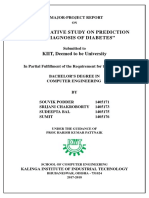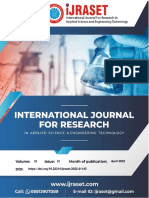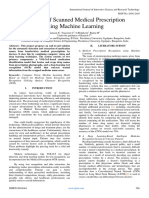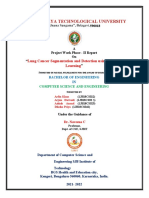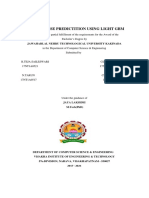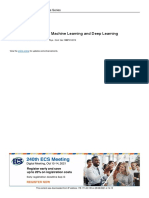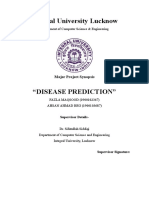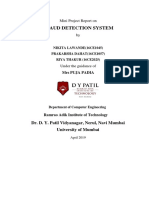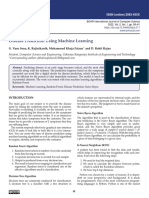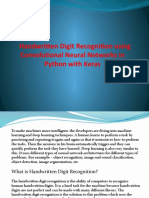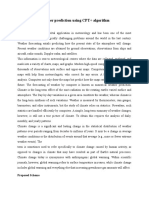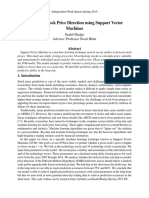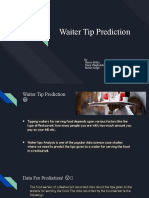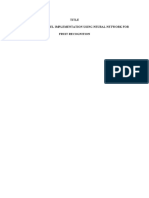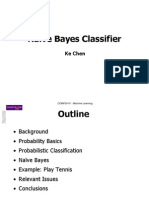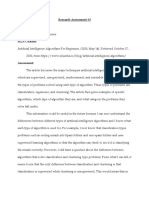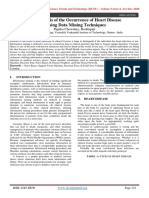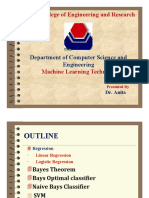0% found this document useful (1 vote)
224 views6 pagesPrediction of Diabetes Using Machine Learning
1) The document discusses using machine learning techniques like SVM, Naive Bayes, KNN, and C4.5 decision trees to predict diabetes using a dataset of 200 patients with 16 attributes.
2) It proposes an architecture where patients provide their medical data, which is analyzed using machine learning classification models to diagnose diabetes.
3) An experiment compares the performance of the four machine learning techniques, finding that the C4.5 decision tree achieved the highest accuracy, recall, and f-measure in predicting diabetes.
Uploaded by
Goutham NCopyright
© © All Rights Reserved
We take content rights seriously. If you suspect this is your content, claim it here.
Available Formats
Download as PDF, TXT or read online on Scribd
0% found this document useful (1 vote)
224 views6 pagesPrediction of Diabetes Using Machine Learning
1) The document discusses using machine learning techniques like SVM, Naive Bayes, KNN, and C4.5 decision trees to predict diabetes using a dataset of 200 patients with 16 attributes.
2) It proposes an architecture where patients provide their medical data, which is analyzed using machine learning classification models to diagnose diabetes.
3) An experiment compares the performance of the four machine learning techniques, finding that the C4.5 decision tree achieved the highest accuracy, recall, and f-measure in predicting diabetes.
Uploaded by
Goutham NCopyright
© © All Rights Reserved
We take content rights seriously. If you suspect this is your content, claim it here.
Available Formats
Download as PDF, TXT or read online on Scribd
/ 6
